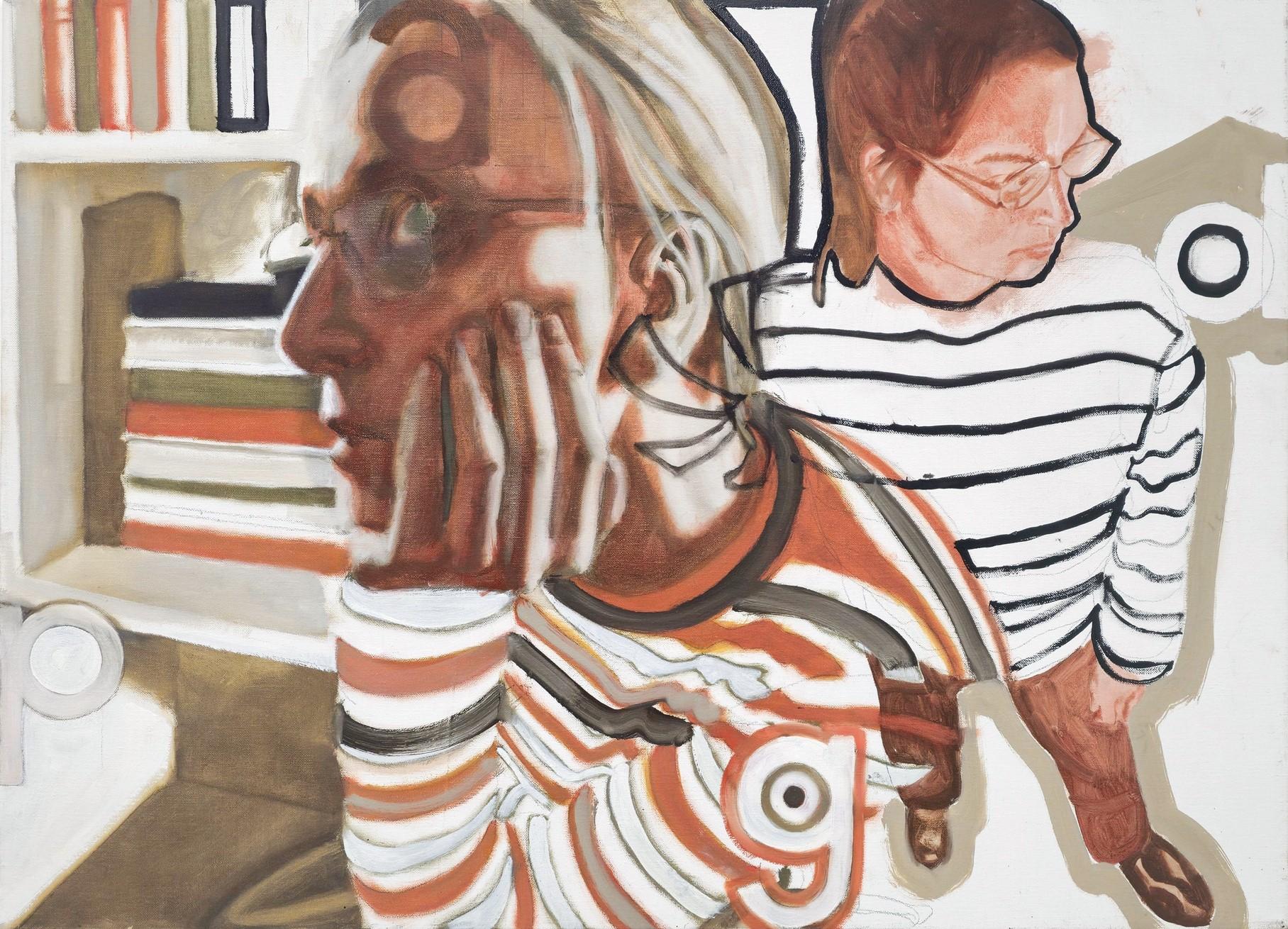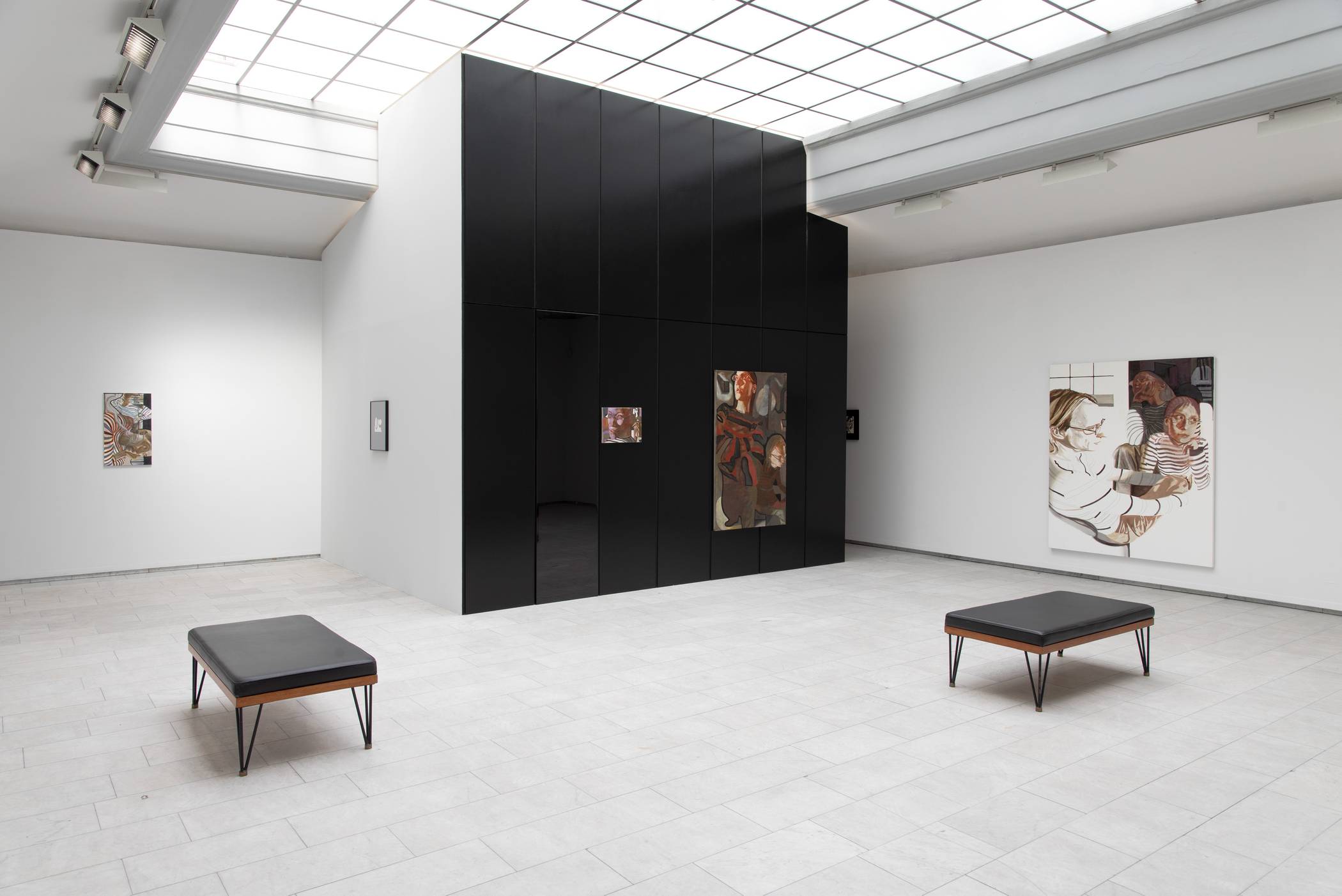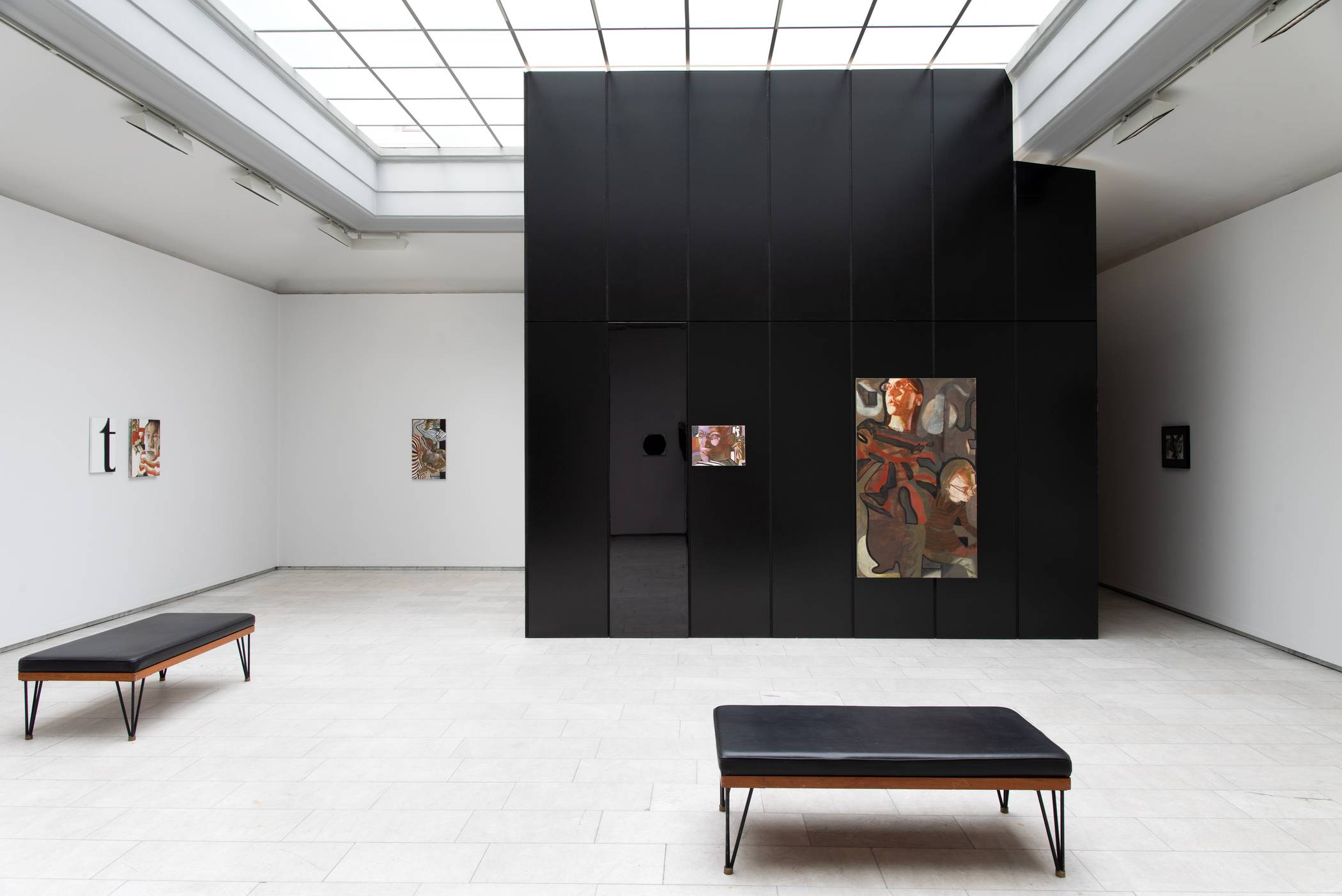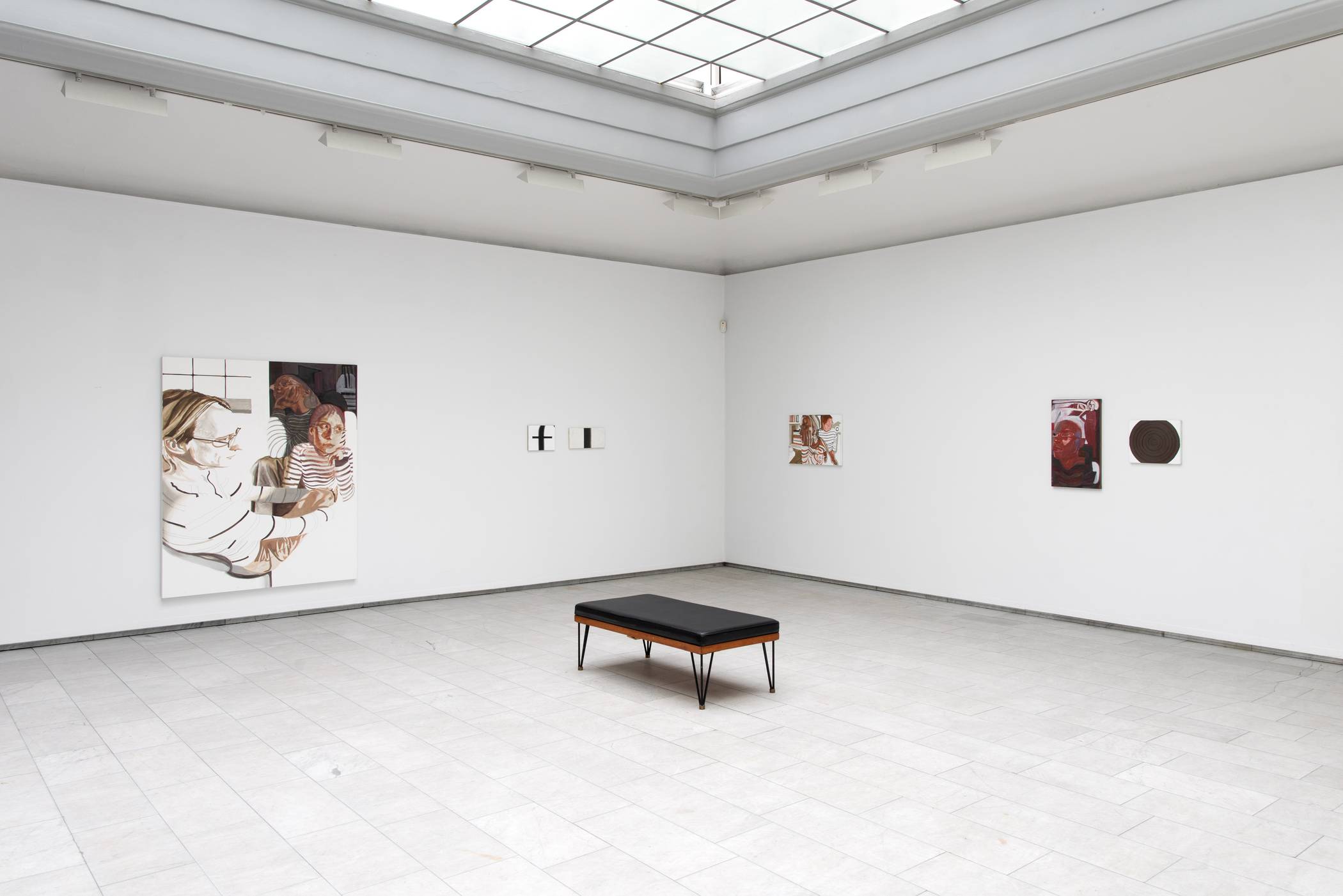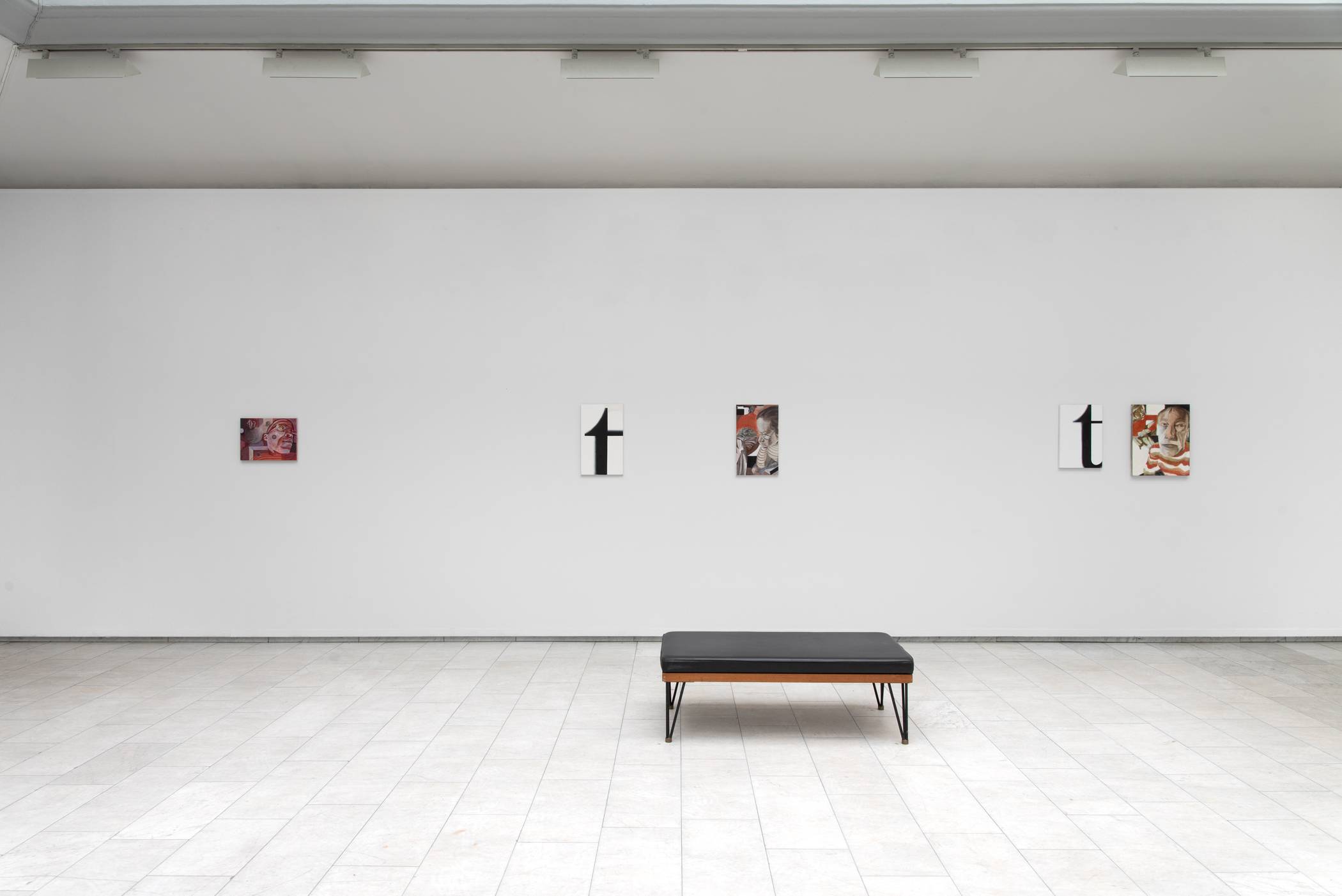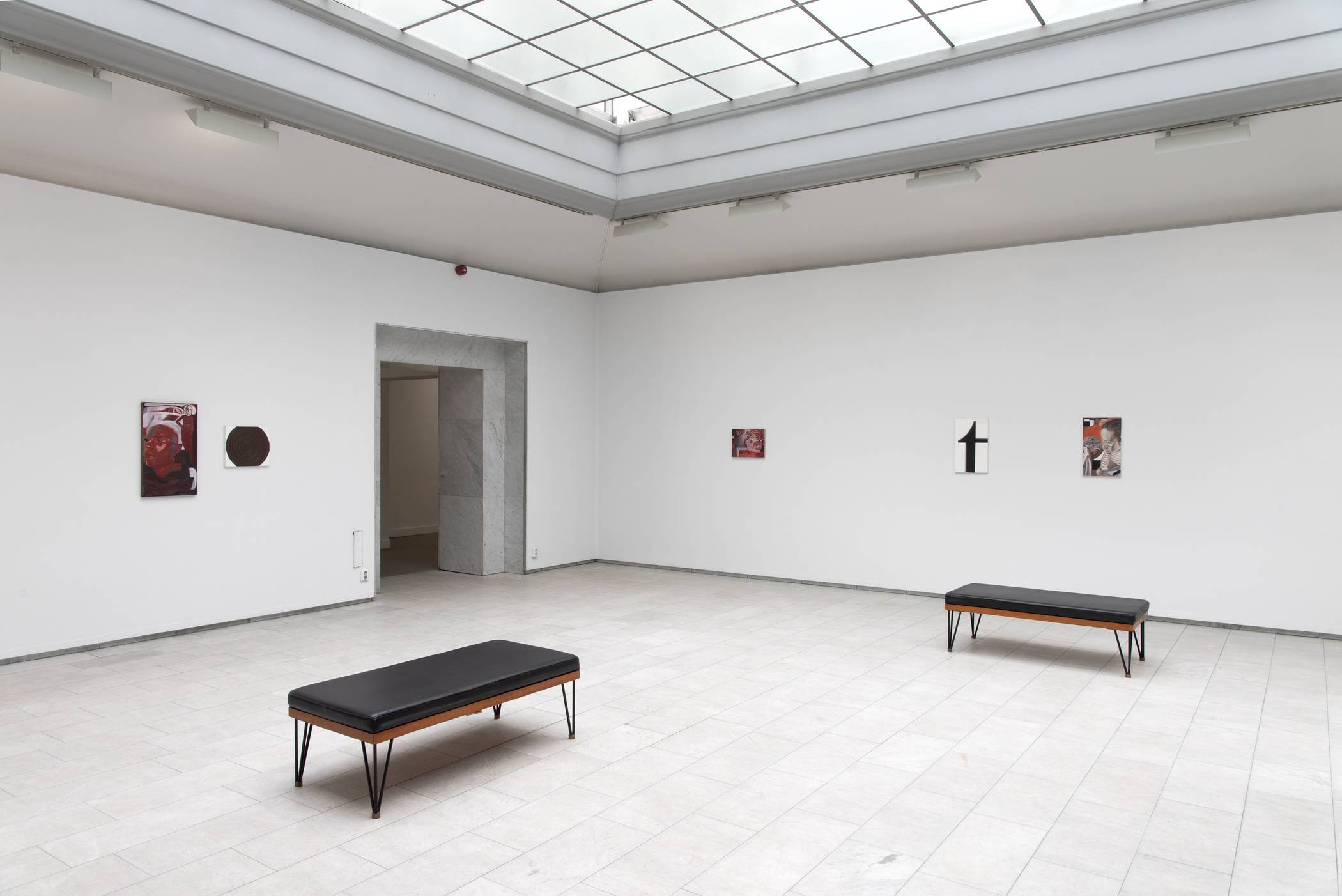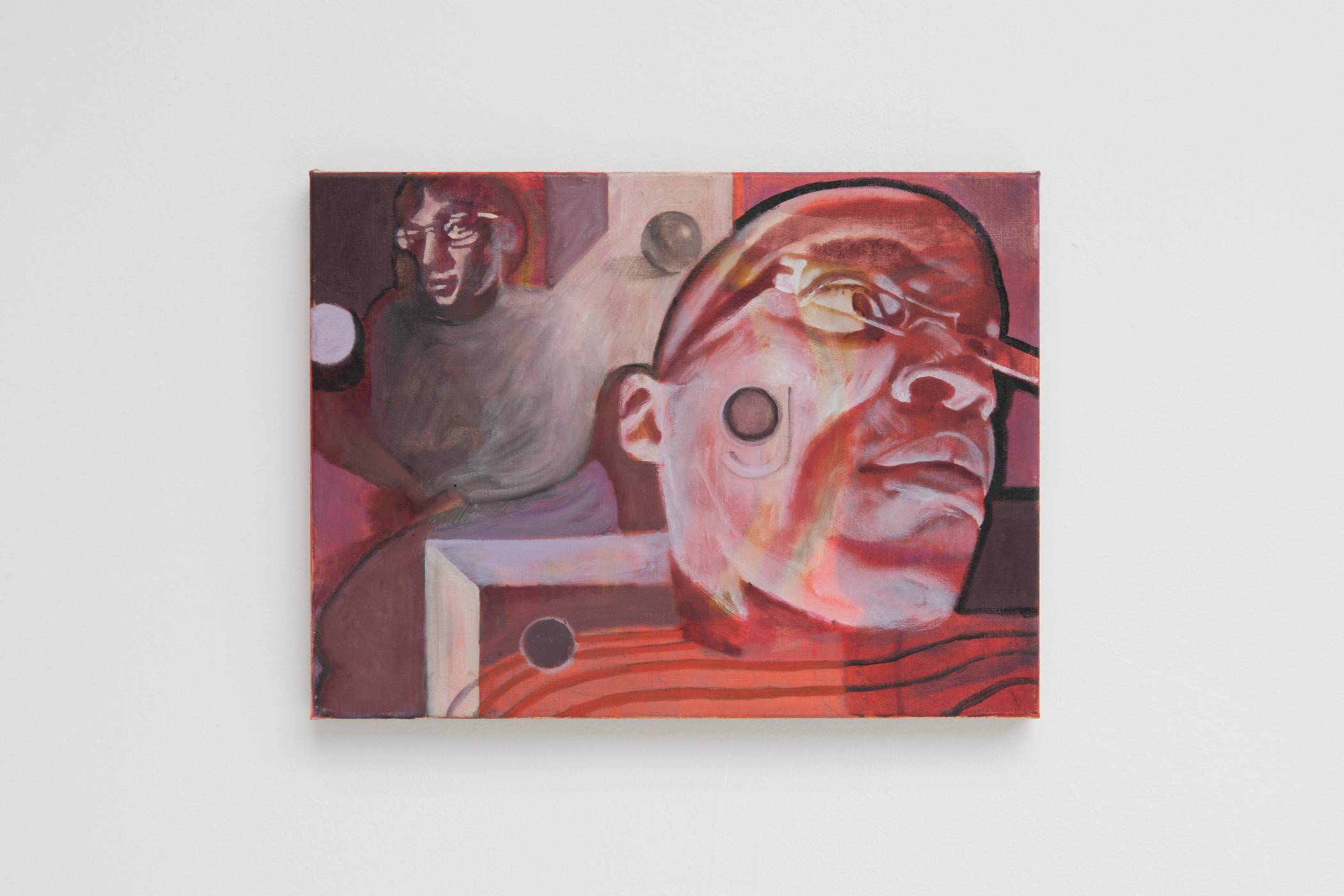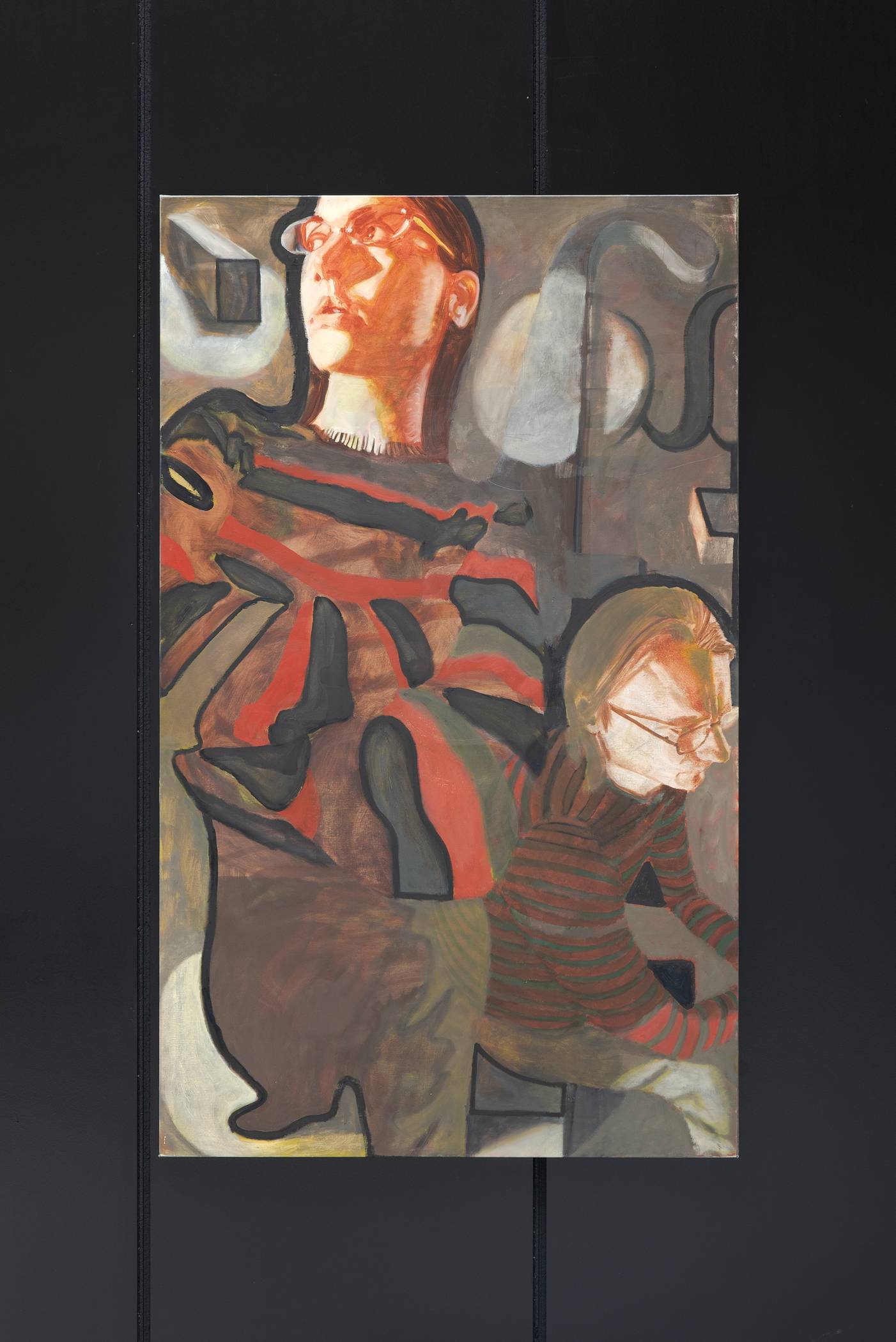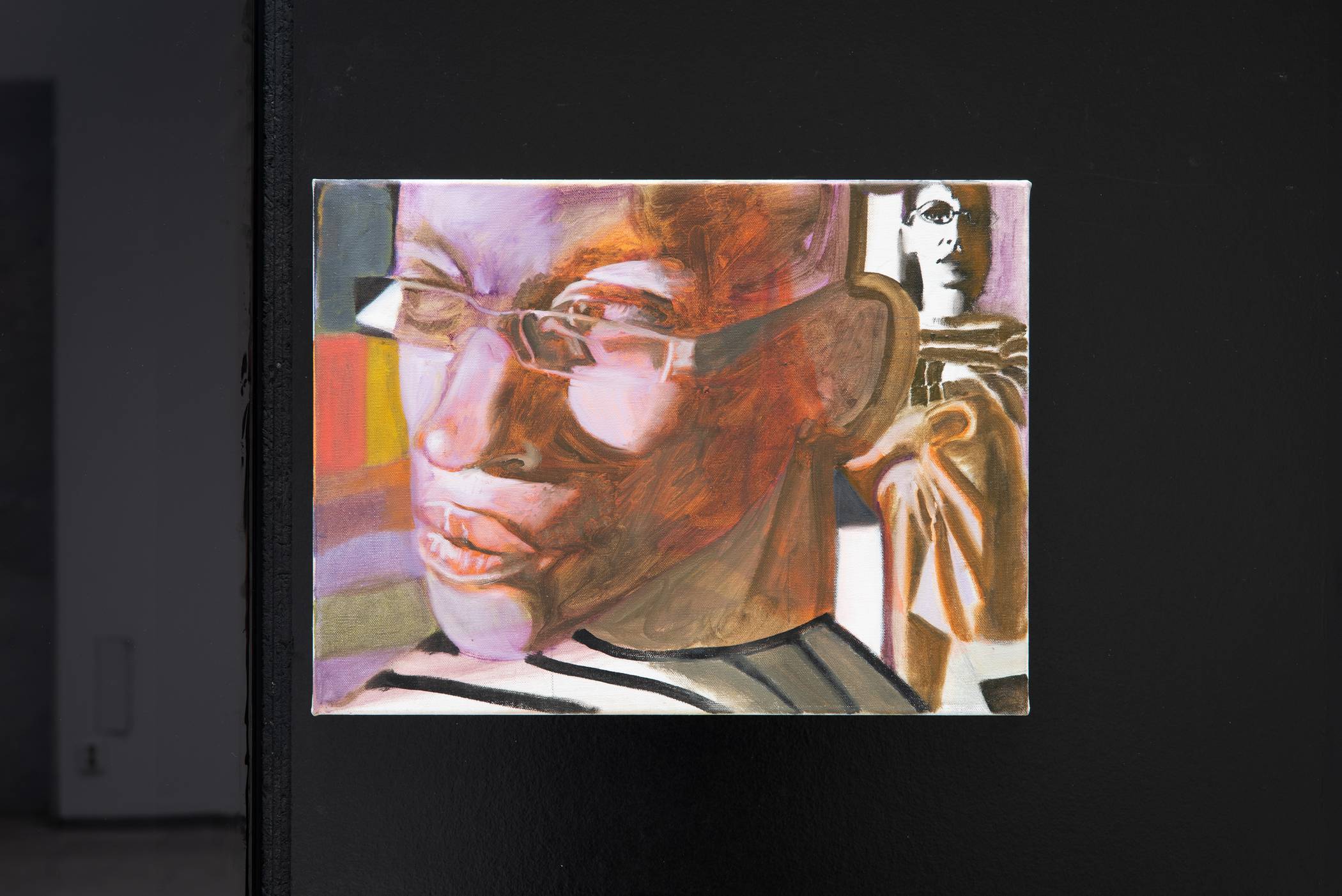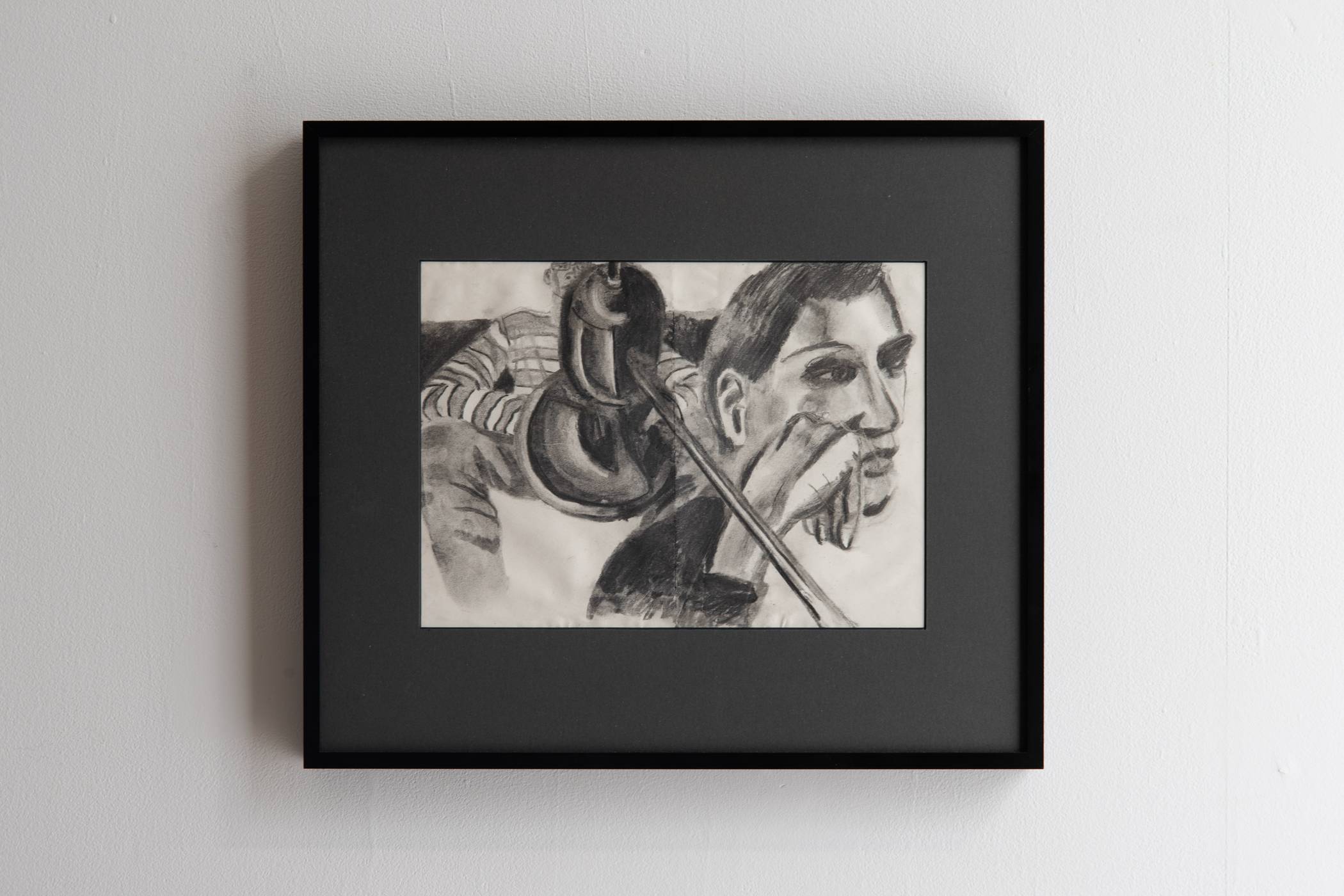Carl Mannov
Barbara
The Skylight Hall
07.08.—07.09.2025
Carl Mannov’s exhibition at Kunstnerforbundet explores the intersection between the staged and the immediate, where everyday elements are inserted into a theatrical reality. In Overlyssalen (the Skylight Hall), he constructs a fragmented narrative in which both people and letters function as visual signs detached from clear meaning.
A series of paintings depicts individuals with neutral facial expressions, wearing glasses and striped sweaters. We might feel a sense of familiarity with the characters, but Mannov withholds information and they remain unidentifiable. Other works consist of letter fragments—where, for example, a “t” might possibly represent a column.
The building blocks of the works—letters, people, body parts, or clothing—are arranged in a scenography where everything is potentially performative. What unites them all is the ambiguous balance between encoding and decoding, between figuration and abstraction.
Carl Mannov (b. 1990, Copenhagen) holds a Master’s degree in Fine Art from the Oslo National Academy of the Arts (KHiO), 2016. He works across painting, sculpture, and installation, exploring narrative structure, surface tension, and visual fragmentation. Drawing on references from architecture, scenography, and graphic aesthetics, he creates complex visual spaces that challenge the viewer’s perception and imagination.
Mannov has held several solo exhibitions, including Kammerspil at Overgaden in Copenhagen (2021), DVÆLER at Heerz Tooya in Veliko Tarnovo, Bulgaria (2019), and Agggoraphobe at Christian Andersen in Copenhagen (2018). Barbara at Kunstnerforbundet is his first solo exhibition in Norway outside of his regular gallery, STANDARD (OSLO).
Group exhibitions include Describe Me the View from My Window at Union Pacific in London (2024), Jeg kaller det kunst (I Call It Art) at the National Museum of Norway, Oslo (2022), Decembristerne at Den Frie in Copenhagen (2022), and shows at MAUVE in Vienna and Salzburger Kunstverein in Austria. In 2023, Mannov was an artist-in-residence at the International Studio & Curatorial Program (ISCP) in New York. He has received several grants, including a three-year working grant from Arts Council Norway (2017) and multiple working grants from the Danish Arts Foundation. His works are part of the Danish Arts Foundation’s collection. In 2022, he completed a public commission for the Court of Appeal of Eastern Denmark in Copenhagen.
The exhibition is supported by the Danish Arts Foundation and Arts Council Norway.
Contours
Eric Schmid
A contour is both boundary and bridge—the precise line where inside meets outside, where self encounters other. In Carl Mannov’s new work, contours manifest as striped surfaces that oscillate between concealment and revelation, mapping the topology of consciousness itself.
The stripe emerges as primary vocabulary: horizontal bands that transform bodies into terrains of thought. These are not mere decorative elements but active boundaries—each line a threshold between dimensions. Two-dimensional letters crown three-dimensional heads. Painted surfaces bridge the gap between symbol and flesh, between the typographic and the corporeal.

This mathematical expression of holomorphic functions illuminates Mannov’s method: consciousness expands in infinite series from a central point. As Châtelet writes, “In giving a point thickness, I thereby cause it to reverberate through the whole plane: this is the miracle of holomorphy.” The contour is no passive boundary but an active zone of transformation. Mannov’s subjects—friends directed in introspective poses—wear their stripes as both uniform and camouflage. The costume effaces individual identity while paradoxically defining it. These painted thinkers become archetypal figures, their striped surfaces serving as coordinate systems for mapping interior states. The contour line becomes a Möbius strip where outer representation and inner feeling merge without seam.
This topology of identity recalls Fichte’s dialectic: the outer I conjures the inner I through mediation. But here the mediating surface is paint itself—material contours that trace immaterial boundaries. Social-realist echoes from 90s theatre blur with contemporary portraiture, as if old performances leave their striped residue on present surfaces.

The contour integral suggests how consciousness circulates, gathering cultural markers—glasses, books, theatrical gestures—as it traces its path. These residues accumulate at the boundaries, making visible what Diederichsen calls the impersonal Sie haunting every intimate Du. Social distance manifests as graphic interval.
Châtelet’s insight resonates throughout: “Virtuality prepares the ground for individuation and links force to a process of partialization, to a dotted-line cutout which reveals the vanity of all solidity.” Mannov’s contours operate in this virtual space—not fixed borders but dynamic zones where identity forms and dissolves. The stripe is simultaneously mask and map, concealing the self while charting its topology.
We are invited to see ourselves as both the contour and what it encircles—the function and its derivatives, the boundary and the bounded space. In this synthetic vision, painting becomes a technology for rendering visible the invisible architectures of thought, the hidden junctions where trains of consciousness converge. The contour emerges as method: perhaps a way of thinking the interval between self and world, or perhaps the dissolution of that very distinction—a zone where actualization and virtualization become indistinguishable.
Eric Schmid is a Chicago based artist, curator and PhD candidate in natural, mathematical and computational sciences. He is a member of the group FPBJPC.
